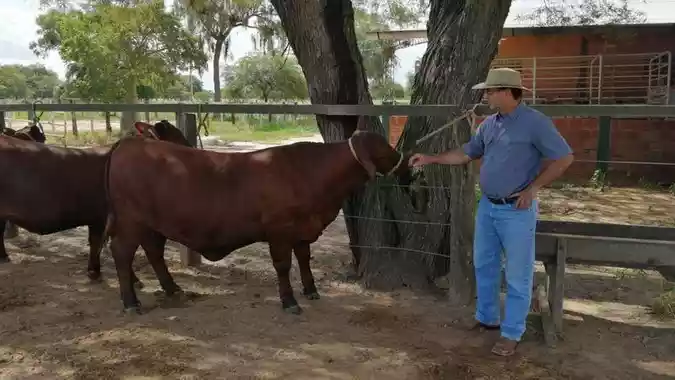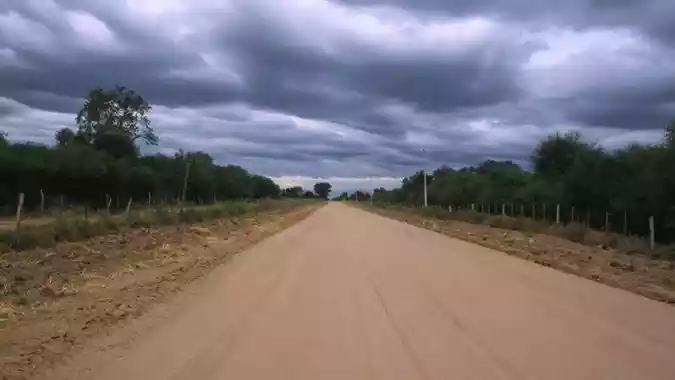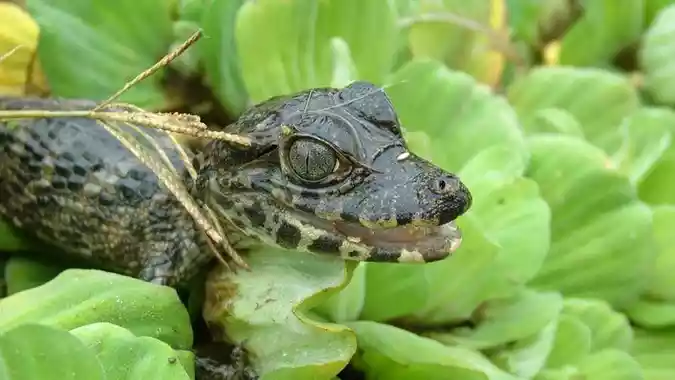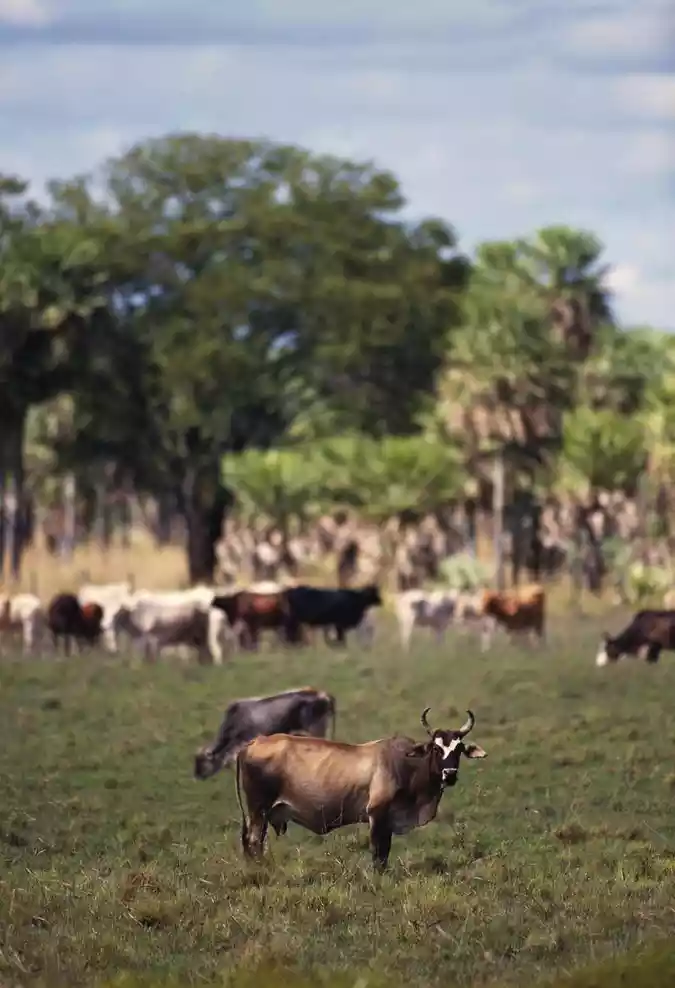The highway will cross the regions of Mato Grosso do Sul in Brazil, Gran Chaco in Paraguay, the provinces of Salta and Jujuy in Argentina, and the regions of Antofagasta and Tarapacá in Chile.
“It’s a new Panama Canal.”
That’s how Egon Neufeld describes the bioceanic corridor, a gigantic infrastructure project that will attempt to link the Pacific Ocean coast in Chile with the Atlantic coast in Brazil.

Neufeld, a wealthy landowner in Paraguay, says the highway – which will be about 2,200 kilometers long and cut through Argentina, Brazil, Chile, and Paraguay – will make it easier for the region’s farmers and peasants to transport livestock and export goods to ports on the Atlantic and Pacific Oceans.
The governments of each country involved in the project have expressed support, but Paraguayan President Mario Abdo has been one of its main promoters.
“Paraguay is the fourth largest exporter of soybeans in the world.”
“For the soybean to reach the Pacific Ocean, it has to pass through the Panama Canal.”
“When the new highway is ready, the entire production sector will save around 25% in logistics costs,” the president told the BBC enthusiastically.
About 525 kilometers of this new highway will pass through the region known as Gran Chaco, one of the main environmental reserves in the country, populated by savannahs and wetlands.
It is home to jaguars, pumas, anteaters, and thousands of plant species and is one of the most biodiverse places on the planet.

Those who wanted to settle in these lands have not always loved this place.
When the Mennonites, a Protestant Christian community, landed there in the early 20th century, they called it the “green hell”.
Neufeld’s grandfather was one of the Mennonites who settled in Chaco in 1930 after escaping persecution in Ukraine.
Almost 100 years later, his grandson continues to struggle against the hostile environment.

WHAT IS THE BIOCEANIC CORRIDOR?
The bioceanic corridor is an infrastructure project developed since 2015 by the Argentina, Brazil, Paraguay, and Chile governments to connect four ports on the Pacific Ocean – Antofagasta, Mejillones, Tocopilla, and Iquique – to the port city of Santos in Brazil.
The highway is estimated to be about 2,200 kilometers long, and the approximate total investment cost is US$10 billion.
The highway will cross the regions of Mato Grosso do Sul in Brazil, Gran Chaco in Paraguay, the provinces of Salta and Jujuy in Argentina, and the regions of Antofagasta and Tarapacá in Chile.
Each country is responsible for meeting certain sections and deadlines, but it is not clear what the final deadline is for the completion of the project.
In fact, in January of this year, the presidents of Brazil and Chile, Lula and Gabriel Boric, confirmed that they would speed up the construction of the stretches corresponding to their territories.
Perhaps one of the countries that are most advanced in the execution of the projects is Paraguay, which already has one of the three stretches in its territory ready.
“The first section of the Bioceanic Corridor had already allowed much easier access for businesses because before, the road was dirt, and when it rained, it was difficult to travel.”
“Now you can easily reach the different Mennonite cities and their colonies,” engineer Alfredo Sánchez, government spokesman for the corridor, told the BBC.
ANIMALS IN THE CHACO FOREST

“For us, the biggest problem is that we have to remove the bush from the fields. If you don’t take care of it, the weeds come back and take over everything,” he explained.
For Neufeld, the highway will provide more job opportunities to attract people from other parts of Paraguay.
His community has successfully established itself in some sections of the “green hell,” in particular, they have managed to build a lucrative cattle and dairy products industry, which are now transported in 4×4 trucks and not in horse-drawn carts as in other communities.
But what is attractive for some is worrying for others.
Taguide Picanerai, a young leader from the Ayoreo indigenous community, one of the first to inhabit the Chaco, the community is already suffering the effects of deforestation because thousands of trees have been cut down due to cattle farming.
About 20% of the Gran Chaco forest, the equivalent of the area of the state of New York, has been converted into land for cattle grazing and agro-industrial production since 1985, according to NASA satellite photographs.

“The new highway will mean more cattle ranching, which leads to a great loss of biodiversity,” says Picanerai, adding that he is also concerned about the loss of territory of the Ayoreo.
He explains that in the past, producers have moved into the Ayoreo’s ancestral territories, prevented access to water, and restricted hunting space for the indigenous communities.
The Ayoreo’s life has changed significantly in just one generation.
Picanerai’s parents lived in the impenetrable forest, where they hunted wild boar and turtles.
The community was convinced by American missionaries who came to Paraguay in the 1960s to abandon the hunting life, put on clothes, and settle down with other indigenous communities.
And much of their land was sold to ranchers and cattle ranchers, leading to years-long legal battles to reclaim some of that land so the community could reestablish itself.
“This territory is vital to us,” Picanerai declared.
THE ENVIRONMENTAL THREAT
President Abdo acknowledges that the new highway will “increase the population in Chaco” and generate “more commercial activity.”
But he believes that the impact will be positive as long as the laws are followed.
He told the BBC that there were already strict rules for landowners, including a clause stipulating that “the maximum people can deforest in the Chaco is 50% of their landholding, and less if the area’s biodiversity is considered more delicate.”
For environmentalist Miguel Lovera, these measures are not enough.
“The construction of new roads leads to more deforestation and felling of forests in small stretches, which puts enormous pressure on the fragile ecosystem,” said Lovera, who heads an organization that fights to protect indigenous groups in the Chaco.
On the other hand, the road has some positive aspects for Bianca Orqueda, a young singer and composer from the indigenous group Nivaclé.
Orqueda, who runs a children’s music school on the outskirts of the Mennonite city of Filadelfia, divides her time between her community and Paraguay’s capital, Asunción.
And the highway will help her shorten travel times.
She is not convinced that her community can continue living in isolation, adding that the Nivaclé need to “progress,” which for some may mean leaving the Chaco and their way of life behind.
“I tell the children that if they want to be doctors, architects, dentists, or musicians, they will have to leave as soon as they finish school and go to another city.”
“Here in Filadélfia, there are no universities; there is nothing unless you want to go into agriculture,” Orqueda said.
For Picanerai, the conservation of the Chaco is about more than just the way of life of his indigenous community.
“The rich biodiversity of the Chaco means that it is a global problem that should concern everyone,” he commented, adding that he is determined to protect his land from newcomers moving into the region after the new highway work ends.
With information from BBC News Brasil

